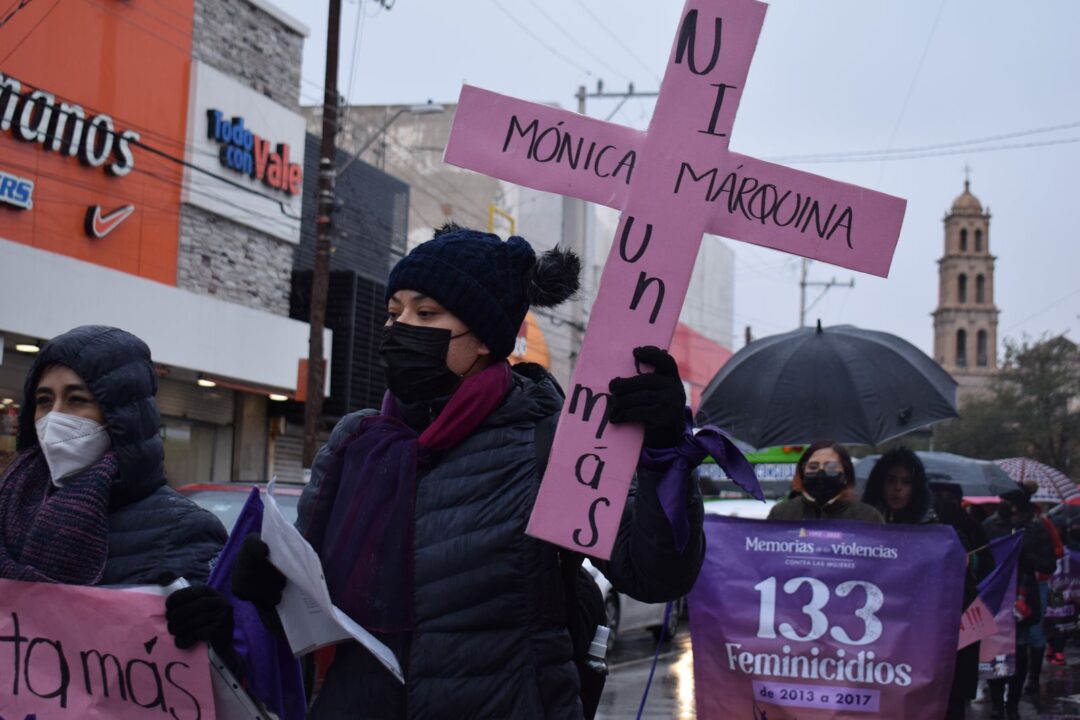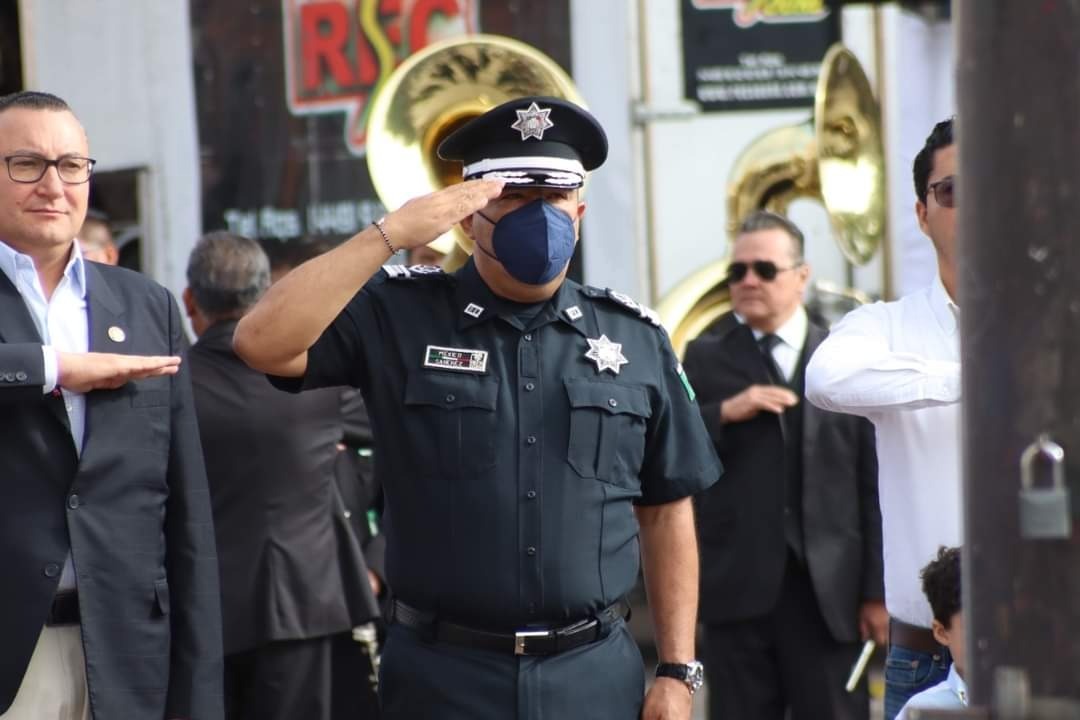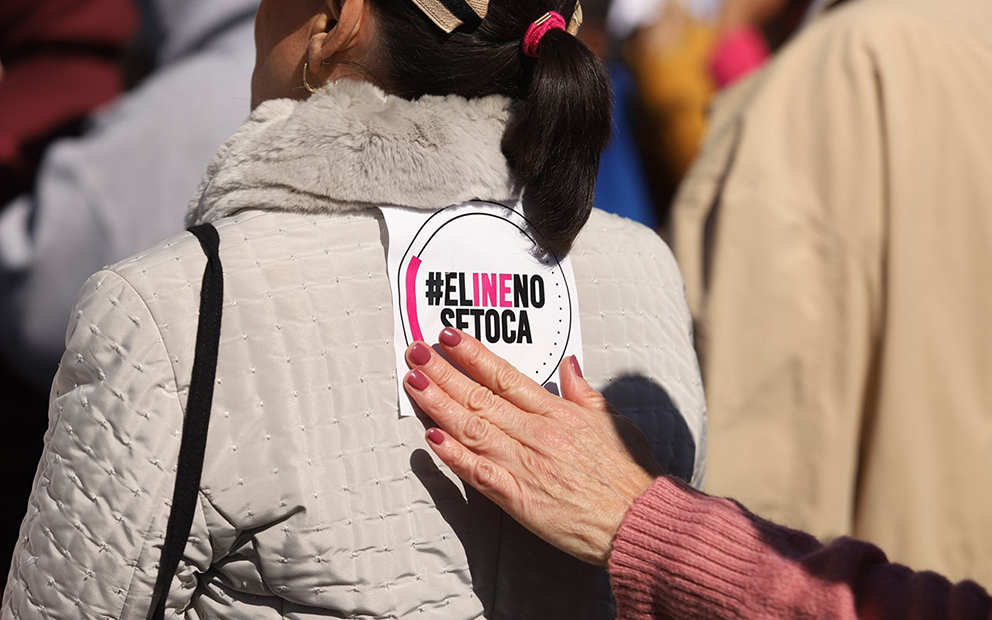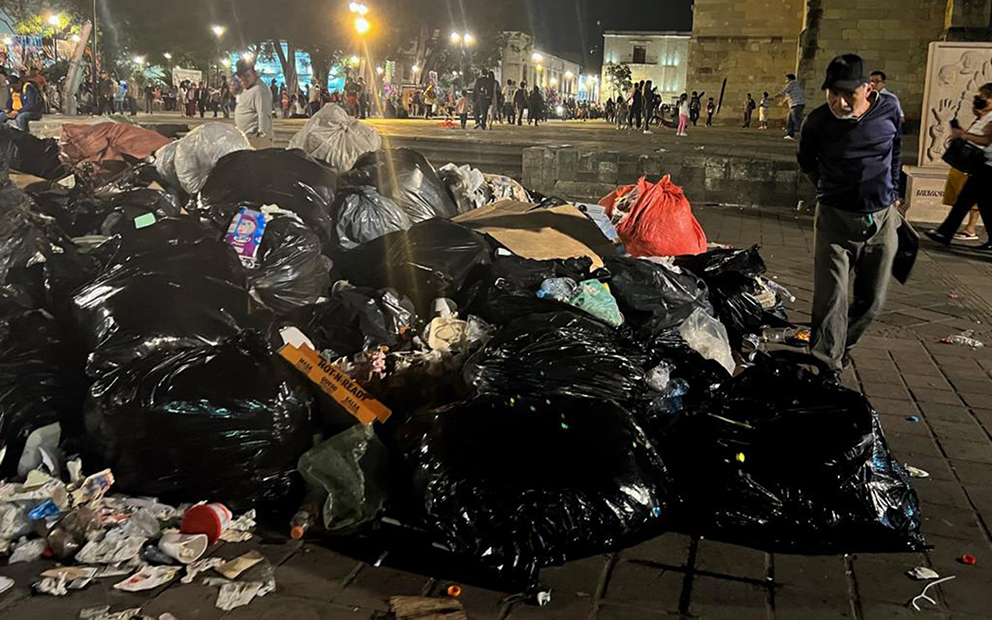The conflation of sex work and human trafficking is rooted in legislative changes that took place during Felipe Calderón’s administration (2006-2012). This confusion takes an emotional, physical and financial toll on sex workers. So, what is the difference between the two?
Text by María Ruiz, originally published February 28, 2022.
Illustration by Inimisqui.
Translated by Elysse DaVega for Pie de Página in English.
MEXICO CITY–When Anahí decided to analyze her work through the lens of an academic study, it reaffirmed the importance of teaching the difference between sex work and sex trafficking. She knew from her own experience: confusing the two brings prejudice and constant discrimination for sex workers, along with emotional, physical and financial tolls, all of which she experiences on a daily basis.
In searching for information to protect herself, she became a researcher into her own line of work. She interviewed experts and organizations, read studies, and studied communication and film.
Now, she’s finishing her thesis on the role of female sex workers in Mexican film since 1918. She’s seeking to explain how public policy and legislation in Mexico influence character building in film, and how this impacts society’s view of sex workers.
She’s also discovered legal loopholes in certain articles of legislation—loopholes that can potentially be used to one’s advantage, explains Claudia Torres, an expert lawyer from Harvard College.
«Writing a thesis is about making an argument. To sort out the differences between sex work and sex trafficking, it’s not enough for me to just say, ‘this is what I think it is because I’m an independent person, I’m of age, and nobody is pressuring me.’ I had to cite articles, studies, and read through legislation,» Anahí says.
There have been countless amendments to laws and regulations concerning sex work in Mexico City. There have been times where it was criminalized. There’s El Fulgor de la Noche (The Brightness of Night) by Marta Lamas. We’re currently going through a more understanding times surrounding the sex work and its difference from sex trafficking. But what happens in legal proceedings?
Anahí is also a co-founder of the Mexican Alliance of Sex Workers (AMETS). They’ve explained that there are women falsely accused of sex trafficking, and women who have been detained in police operations and accused of having connections to sex workers. AMETS isn’t the only organization that has denounced this.
In the last few months, many sex workers have protested against the criminalization and harassment that they experience at the hands of police in Mexico City.
Organizations like the “Elisa Martínez” Women’s Support Street Brigade are dedicated to bringing awareness to arbitrary arrests of sex workers in operations against human trafficking, sexual exploitation of children and pimping. They’ve reported that this change has had a negative effect on the historic struggle for the rights of sex workers.
The negative effects of the sex trafficking law
Human trafficking with intent of sexual exploitation increased greatly during Felipe Calderón’s presidential administration. It was one of the various forms of organized crime that actually grew stronger under Calderón’s security strategy. In April 2012, during the last year of his administration, legislators made an amendment. The former ‘Law to Prevent and Sanction Human Trafficking’ became ‘the General Law to Prevent, Penalize and Eradicate Human Trafficking and Protect and Assist its Victims’.
The new law brought on an anti-trafficking vision in the country, including a period of victim suppression, which made it harder to distinguish human trafficking from other situations.
In 2018, the president of the Mexico City Commission for Human Rights, Nashieli Ramírez, shared an «Analysis of Sentencings in Cases of Human Trafficking,» which showed that legislative amendments were not having positive impacts.
«The 2007 Law to Prevent, Repress, and Sanction Human Trafficking brought together elements established in the international definition of human trafficking; that is, the Palermo Protocol, behaviors, and the means and ends of trafficking,» Ramírez explained.
While it was expected to make it easier to try cases, with this amendment, the results haven’t been better than with the previous law. Despite the increase in the number of detained persons, in comparison with the 2017 Law, not all of them have been sentenced.
«There may be more awareness on the topic, but what happens if prosecutors are untrained in the topic and are sentencing sex workers as traffickers?» Anahí asked.
Confusion and disinformation
While reviewing legislation for her thesis, Anahí felt that she herself was vulnerable because of Article 14 of the General Trafficking Law, which mentions that any person producing or profiting off of pornographic material be imprisoned for 10 to 15 years. The article reads:
«Anyone forcing a person to commit pornographic acts or benefitting from it, producing pornographic material or benefitting from it, or deceiving/participating in the deception of a person to perform sexual acts or take part in pornographic acts will be sentenced to 10 to 15 years in prison and receive a minimum wage indexed fine ranging anywhere from a 1,000 to thirty-thousand working days.»
Anahí noticed a problem in the composition of this article, because if the phrase «producing pornographic material or benefitting from it» stands independently of the sentence before and after it, it violates the rights of independent sex workers.
«For example, it violates Article 7 of the Universal Declaration of Human Rights. It could be interpreted in a way that a person producing pornographic material or benefitting from it, although producing it with willing, of-age porn actresses, could be punished for their own productions,» Anahí explained.
Anahí creates transfeminist post-porn (anti-misogynist, inclusive pornography) to destroy the sexist myths surrounding porn and demonstrate that there are many forms of pleasure.
Feelings of doubt and anxiety set off by the trafficking law led her to search the internet for possible implications it could have on her job, but she didn’t find anything. So, using the government transparency platform, she sent information requests to several agencies with jurisdiction over sex work to see if they knew the difference between sex work and sex trafficking.
After receiving responses, she was relieved to see that the majority of government agencies clearly recognize the differences. What’s lacking, Anahí says, is for this information to be spread.
People need to know that sex work isn’t illegal in Mexico. This information needs to reach everyone and their peers so that it’s accessible. Also, those working at governmental agencies need to be trained in this area so that they don’t criminalize or discriminate against us.
Anahí
What are the differences?
These are the responses Anahí received from the Secretary of Women, the General Prosecution Office, the Commission for Human Rights, and the Council to Prevent Discrimination regarding the differences between sex work and sex trafficking:
Sex work: Livelihood option for men, women and people from the lesbian, gay, bisexual, transsexual, transgender, transvestite and intersexual communities.
Sexual/human trafficking: This is a crime. A serious violation to human rights. Not all sex work is sex trafficking, and not all trafficking is sexual exploitation; there is trafficking with the means of labor exploitation.
Lived experience with Chabela and Claudia
Chabela and Claudia have been in sex work for more than ten years. The streets, along with the Street Brigade, have taught them their rights. They’ve also learned how to work while protecting their sexual health and how to identify when a woman who is a victim of trafficking.
Claudia is a sex worker and studies human rights with the Brigade. She dreams of becoming a lawyer. She explains that human trafficking isn’t just sexual trafficking; there are many workplaces where construction workers or domestic workers can also become victims of trafficking.
In any field of work, if people are being forced, held against their will, or threatened, that is a sign of human trafficking.
In many cases, trafficking begins in the home or through one’s close relationships. Claudia says that she used to know a girl in her line of work who had been exploited by her father.
«She went to work with her boyfriend, who was already twenty years older than her. But he wasn’t the one who was forcing her, it was her dad. It was good that she opened up to me. We started talking and she just came out with it. Her father had taken away her kids. She started out working in cantinas in Puebla. The time came when she met her boyfriend and they moved to Mexico City, but she kept sending her dad money to be able to see her kids. Her father would say that because her mom, who also did sex work, didn’t make any money anymore, it was her turn. I told her, ‘You know what? I know a place that can support you’, and that’s when I brought her to the Street Brigade. Everyone that comes to the Brigade can get their kids back and file a report,» she says.
The girl exited sex trafficking. Claudia was glad to know she could help her.
In her work, she’s come to realize that when people are isolated it is one the first signs of human trafficking.
«When you see someone that doesn’t talk, they’re just looking around or they’re on their phone… they look nervous, they don’t eat, they don’t laugh. That’s how you identify a girl being trafficked,» she explained.
Other signs of trafficking
Chabela has been in sex work for 45 years, since before she was 20. She was orphaned when she was young, and she began to do sex work out of financial necessity. She doesn’t romanticize sex work, she tells it like it is. It’s not easy and you have to watch yourself. It’s the baseline view of the Street Brigade and the co-founders of the first sex worker coorperative.
She identifies women who might be victims of human trafficking through the following behaviors:
They don’t eat much, they don’t carry cash. Even when you see them alone, there’s somebody watching. They might have 20 pesos (US$1) tucked away, and the person will come down on them for «stealing» from them. Sometimes there’ll be girls who won’t have anything but a vegetable or a bottle of water so that they don’t lose their figure and can keep making money. The life of a trafficking victim is really sad.
A goddamn human rights alliance
Chabela and Claudia wish people were more empathetic. They wish that people knew that it’s not easy to get out of sex work, and that they would listen to victims before discriminating against them or judging them.
With the Street Brigade, Claudia and Chabela learned to support female trafficking victims to learn their rights so that they can defend themselves. This is why they look for the youngest ones:
I’ve always said, nobody’s going to pimp me out. I decided that nobody’s going to take my money away from me because it’s mine and I’ll earn it for those who really need it—my kids and my family.
«We always give each other the low-down. We’ll say to each other, ‘Hey, look out for that girl over there, or hey, tell your girl to call her girl and have her call the Brigade.’ We’re a goddamn alliance. We’ll ask each other ‘When did she get here? Who brought her?,» Claudia says.
*Anahí participated in this article through access to information requests quoted in the article and by speaking on her experience surrounding the confusion between trafficking and sex work. The rest of the content in the article is from interviews with sex workers accompanied by the Street Brigade.
This piece was produced with the help of OSF and is part of a project by the network organized by Periodistas de a Pie training journalists in sex work coverage in Mexico City.
We’re grateful for the time, advice, and collective reflection from Dignificando el trabajo, Casa de las Muñecas Tiresias, the “Elisa Martínez” Women’s Support Street Brigade, Centro de Apoyo a las Identidades Trans, Agenda Nacional Política trans de Mexico, Equis justicia and Alianza Mexicana de Trabajadoras sexuales, as well as the team from Sónica in Guatemala, who helped facilitate our meetings.
Credits:
Project coordinator: Daniela Pastrana
Editorial assistant: Edith Victorino
Editor: Daniela Rea
Photo and video editor: María Ruiz
Reporting: Yazmin, José Ignacio De Alba, Isabel Briseño, Arturo Contreras, María Ruiz, Daniela Pastrana
Photography: Duilio Rodríguez, Isabel Briseño y María Ruíz
Illustration: Inimisqui
Infographics and distribution: María José López, Daliri Oropeza, Lucía Vergara
Content distribution review: Lola Dejavú
Informational designer: Fernando Santillán
Click here to sign up for Pie de Página’s bi-weekly English newsletter.
Ayúdanos a sostener un periodismo ético y responsable, que sirva para construir mejores sociedades. Patrocina una historia y forma parte de nuestra comunidad.
Dona


















